Laboratory I
A key part of the University of Michigan Mechanical Engineering curriculum is two laboratory classes. Throughout the semester in Lab I, we are presented with eight requests from mock companies for our laboratory services. These requests ranged from performing a tensile test on aluminum to determining drag on a pickup truck canopy. In the classroom, experimental error and ethics in reporting experimental results are heavily discussed. Every lab required writing a five to ten page memo style report where six reports were written as a team and two individually. Most experiments involved the use of a LabView program to record the data.
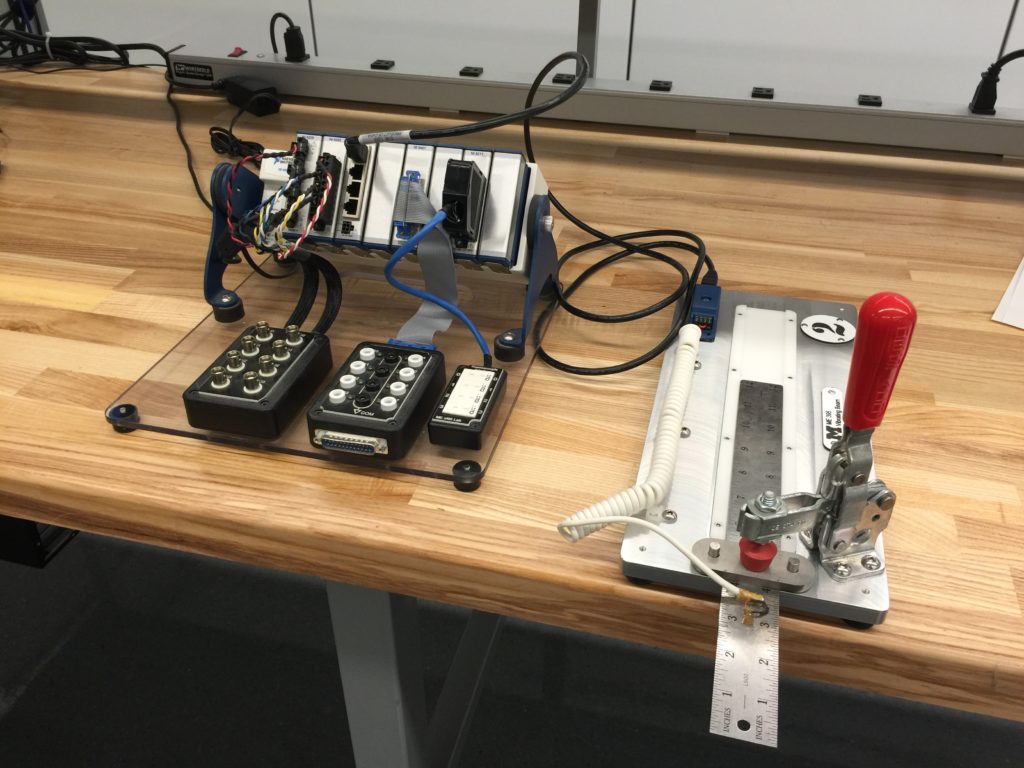 Flexible beam experiment where we determined the elastic modulus and natural frequency of the ruler using data from the attached strain gauge.
Flexible beam experiment where we determined the elastic modulus and natural frequency of the ruler using data from the attached strain gauge.
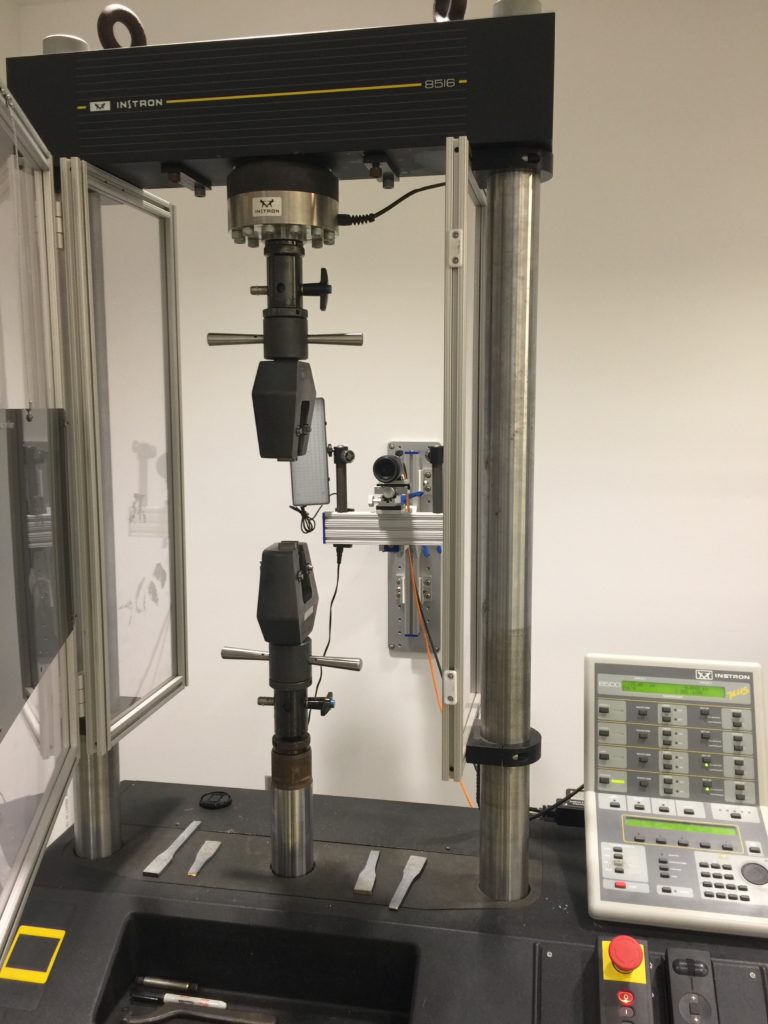 A tensile test was performed on a sample of aluminum to failure to determine the yield strength.The experiment invoked use of digital image correlation to measure strain.
A tensile test was performed on a sample of aluminum to failure to determine the yield strength.The experiment invoked use of digital image correlation to measure strain.
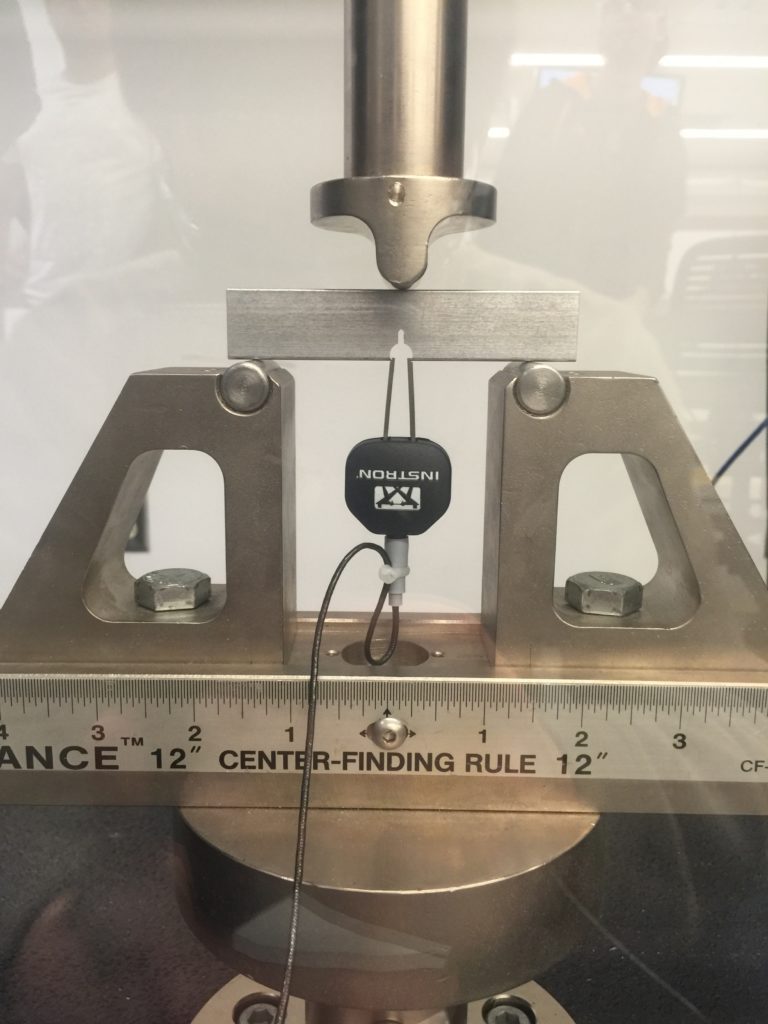 A pre-cracked specimen was loaded until failure to determine the fracture toughness of the material.
A pre-cracked specimen was loaded until failure to determine the fracture toughness of the material.
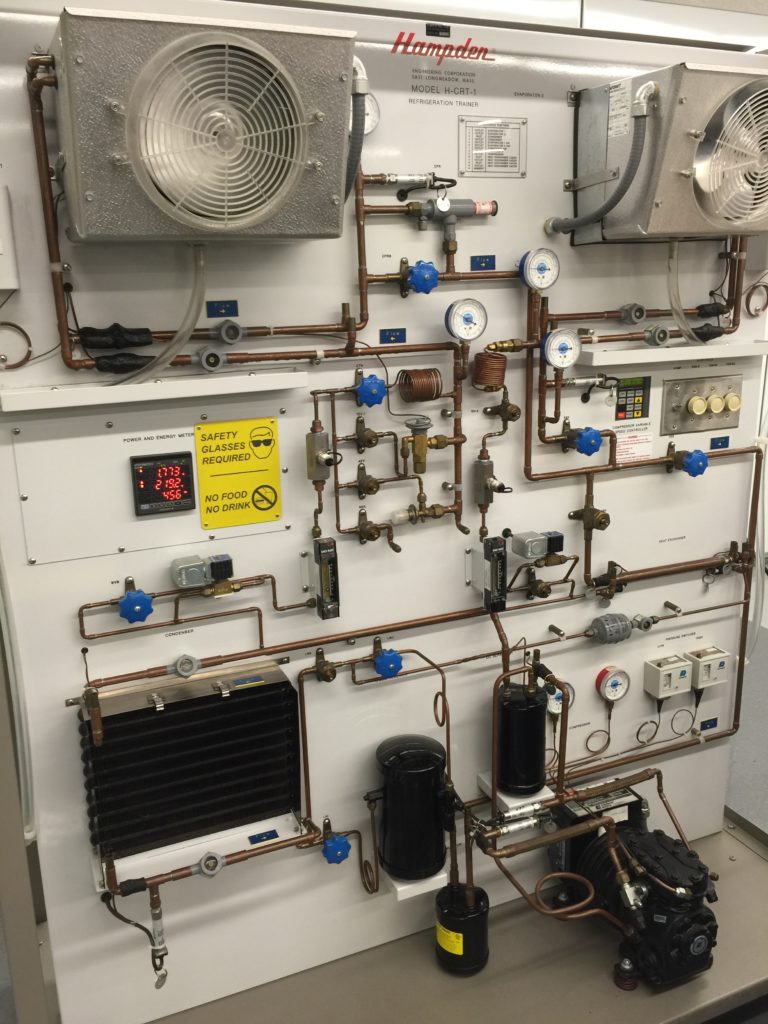 This refrigeration training unit was used to determine the impact of a partially blocked heat exchanger on system coefficient of performance.
This refrigeration training unit was used to determine the impact of a partially blocked heat exchanger on system coefficient of performance.
 This wind tunnel was used to run tests on a clay model truck bed cover and determined the change in drag force.
This wind tunnel was used to run tests on a clay model truck bed cover and determined the change in drag force.
Laboratory II
Laboratory II is an extension of Laboratory I with more complex problems to be solved in the lab. The experiments were carried out over the course of three to four weeks. Posters and presentations were used to deliver experimental results in addition to written reports.
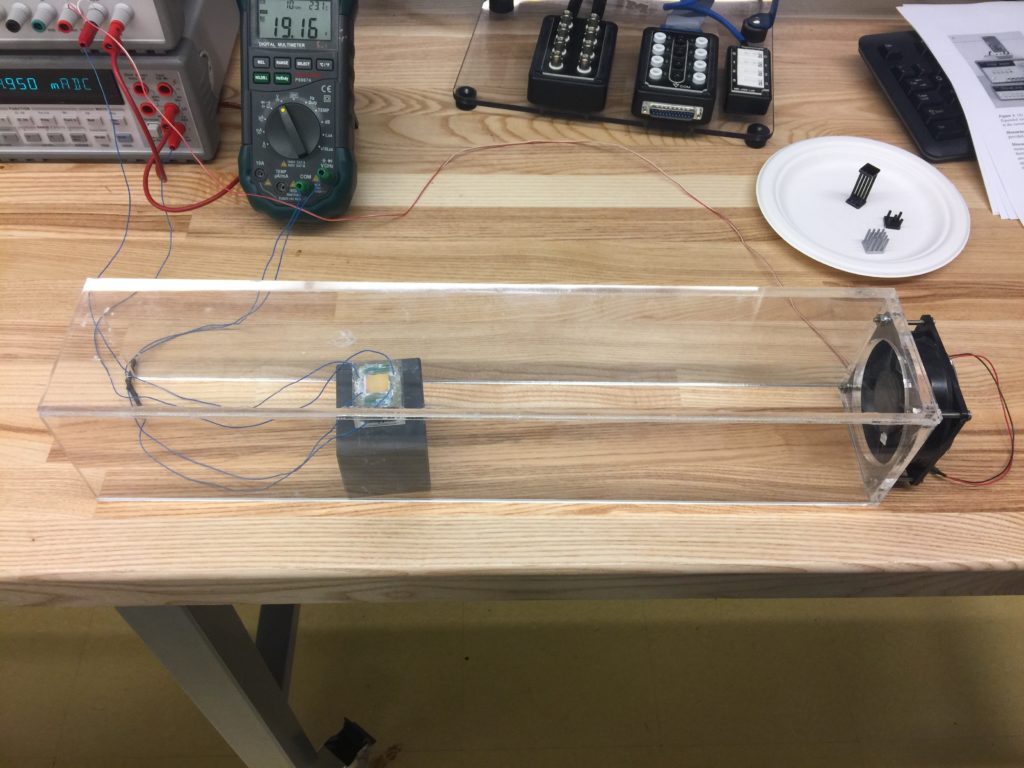 The performance of several different heat sinks on a microchip were characterized in order to advise a microchip manufacturer on the size of heat sink required for a particular application.
The performance of several different heat sinks on a microchip were characterized in order to advise a microchip manufacturer on the size of heat sink required for a particular application.
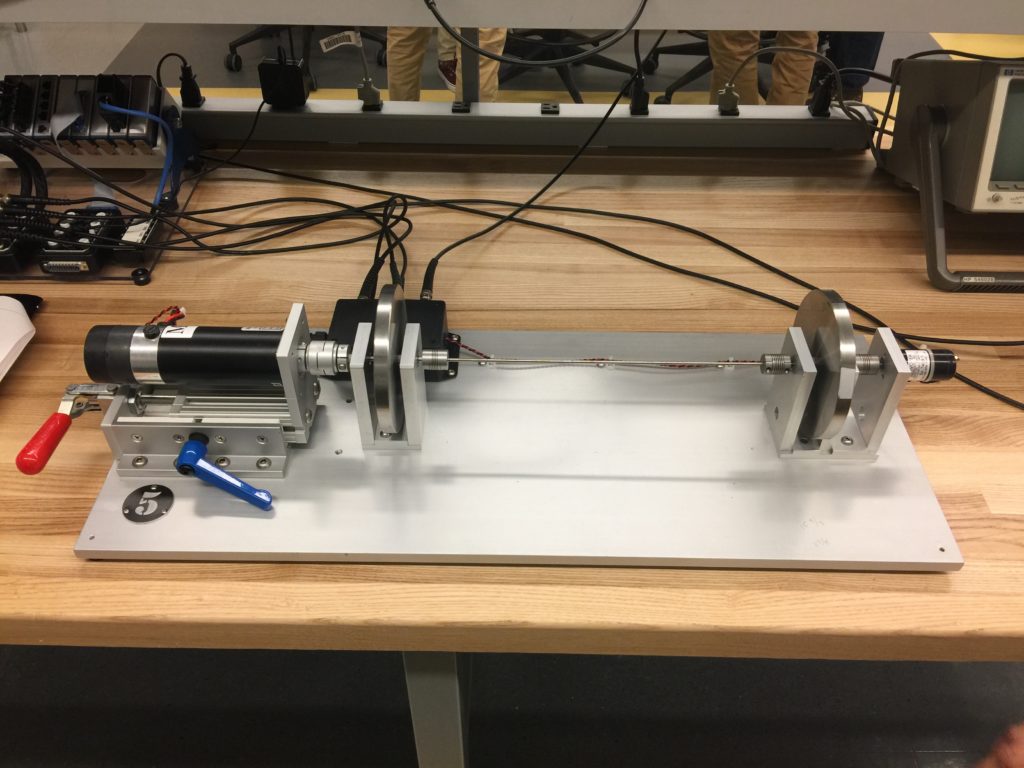 This model simulated a truck drivetrain and we characterized the stiffness and natural frequency of the shaft while investigating a “vibration issue” with the truck.
This model simulated a truck drivetrain and we characterized the stiffness and natural frequency of the shaft while investigating a “vibration issue” with the truck.
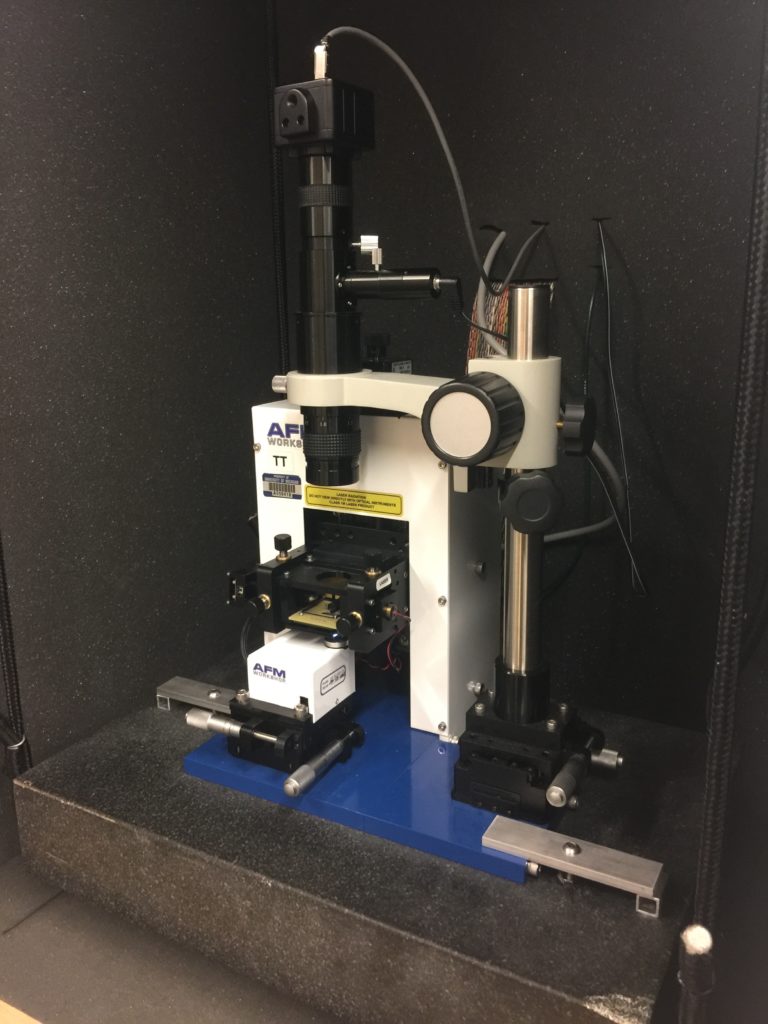
 An atomic force microscope was used to measure the surface of a CD, DVD, and Blu-ray disc. This information was used to calculate the amount of data that could be stored on each device. Above are surface images generated from the scanning of the three devices.
An atomic force microscope was used to measure the surface of a CD, DVD, and Blu-ray disc. This information was used to calculate the amount of data that could be stored on each device. Above are surface images generated from the scanning of the three devices.
Design and Manufacturing I
Another key part of the University of Michigan Mechanical Engineering curriculum is three design and manufacturing courses. This course is an introduction to the mechanical engineering design process and how to develop a product from its conception to the construction of a prototype. Classroom learning is reinforced with a project building a robot to compete on a team of four in a ball-scoring game. This course introduced me to CAD and I learned how to make and read engineering drawings. This course also taught me how to use a milling machine and a lathe as well as precision measurement devices. We also used a laser cutter and a water jet to make our robot. I gained experience working on an engineering team and writing design reports.
 This is my team’s robot that competed in the game. The scoop on the side was used to funnel balls sitting on a raised platform on the side of the arena into the bucket which was raised to a basket to score the balls.
This is my team’s robot that competed in the game. The scoop on the side was used to funnel balls sitting on a raised platform on the side of the arena into the bucket which was raised to a basket to score the balls.
Design and Manufacturing II
This class is an introduction to mechatronic systems. The project is to build a four-bar linkage laser reflector that responds to a randomly ordered firing of four lasers. Scoring is based on the percentage of time that the laser is reflected onto the target. An Arduino program is used as a PID controller for the system. In the classroom we studied linkages and transmissions and analyzed load and power flow through such systems. A major focus of the class was on the selection methods for common off-the-shelf engineering components. We learned about proper sizing and lifetimes of bearings, gears, and belt drives. We learned selection and application of motors based on predictive models and motor curves. We learned to calculate the required strength of screws and fasteners in different loading configurations. We used MSC Adams to model our system and predict dynamics necessary for proper selection of transmission and motor.
Design and Manufacturing III
The University of Michigan College of Engineering takes great pride in its capstone courses. Teams of four to six are created and paired with a project sponsor. The first step is to contact the sponsor and define the problem requirements. After that, research into the design problem background is conducted. From there, design requirements are established. Concept generation methods are used to create as many solutions as possible and then down selected using formal and informal methodologies. Technical analysis using mathematical models is performed to demonstrate basic system function. A series of design reports are delivered throughout the semester to track the project’s progress.
My project was working with Ann Arbor based Kulisha whose goal at the time was to simultaneously divert food waste from landfills and stem the need for harmful overfishing practices to feed livestock. This to be done by growing protein-rich Black Soldier Fly Larvae in organic waste. Kulisha’s problem was how to sort the larvae from the leftover organic waste at optimal harvesting time.
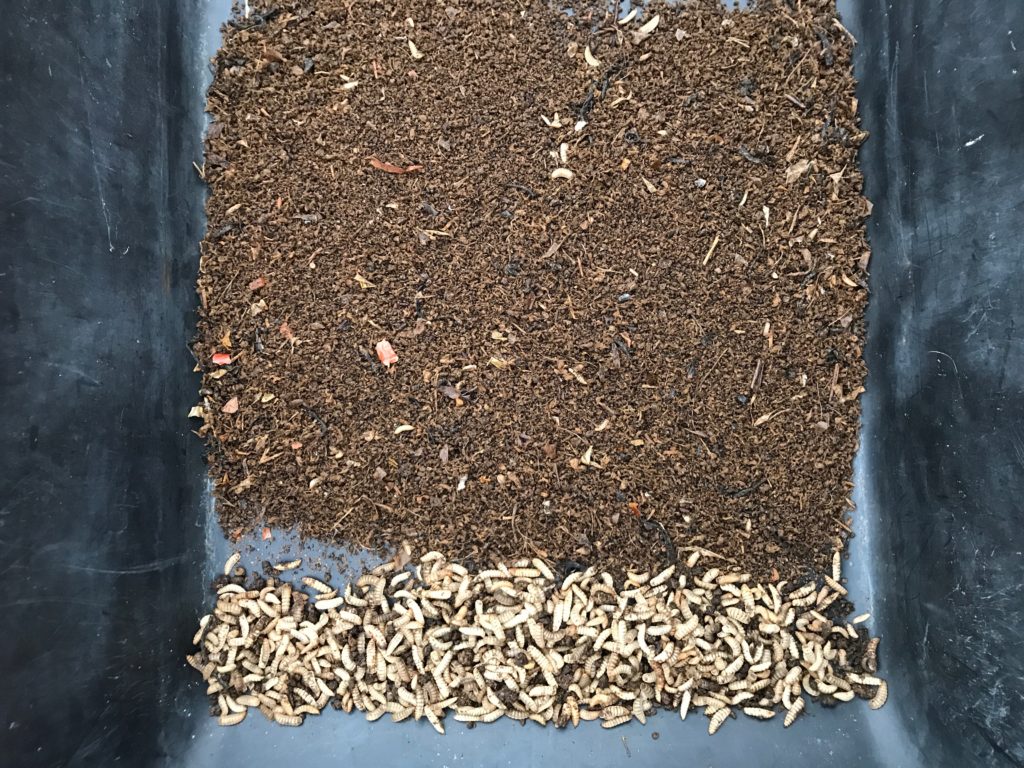 This is a small amount of the mixture that we sorted by hand. It became immediately obvious to us why this manual process would be unsuitable for a large scale operation.
This is a small amount of the mixture that we sorted by hand. It became immediately obvious to us why this manual process would be unsuitable for a large scale operation.
During the benchmarking process, we came upon a machine that was designed to separate seeds from there hulls and other plant matter. This design leveraged the difference in weight of the particles which also occurred in our problem. We built a foam and plastic mockup that worked and were able to pick this as our design.
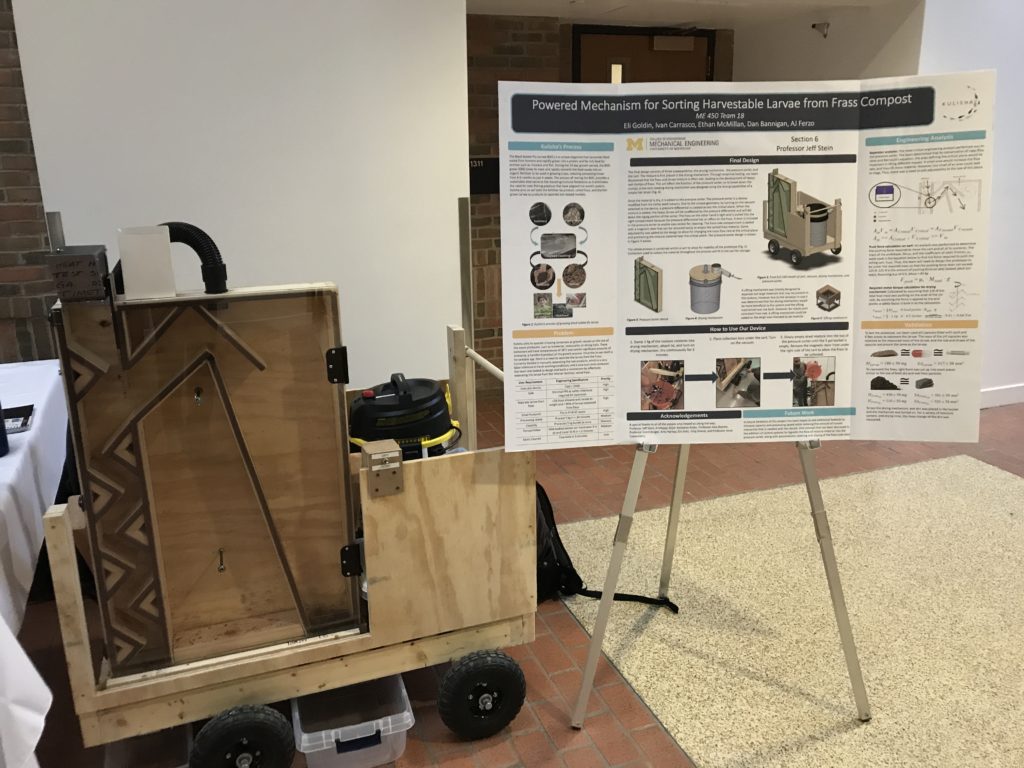 This is our final prototype along with our poster at the year-end Design Expo. The way the device works is that the mixture is poured into the funnel on the top left and form there the heavier larvae fall down the zig-zag chute while the lighter organic waste is pulled with vacuum pressure into the chamber on the right.
This is our final prototype along with our poster at the year-end Design Expo. The way the device works is that the mixture is poured into the funnel on the top left and form there the heavier larvae fall down the zig-zag chute while the lighter organic waste is pulled with vacuum pressure into the chamber on the right.
Manufacturing System Design
This course served as in introduction to the procedures and methodologies for designing manufacturing systems. Topics included:
- Manufacturing System Performance
- Paradigms of Manufacturing
- Building Blocks of Manufacturing Systems
- Computer Numerical Control
- Procedures in Manufacturing System Design
- System Productivity
- Quality of Manufacturing Systems
- Responsiveness
- Cost of Manufacturing System
- Manufacturing System Launch
- Reconfiguration of Manufacturing System
- Lean Manufacturing
- Supply Chain Management
This course included a semester long project where we designed a manufacturing system to recycle all of Ann Arbor’s recycling and process one type of the plastic recovered into a simple product. This project involved a significant amount of research into the recycling sorting process and into all the necessary machines for processing the plastic. Calculations were carried out to estimate the number of machines needed, and the cost and profit of the system.
Design for Manufacturability
The goal of this course was to study systematic methods in product design to improve overall quality and cost. Topics included:
- Product Systems
- Design Requirements
- Functional Analysis
- Product Architecture
- Manufacturing Processes
- Material Selection
- Design for Assembly
- Design for Snap Fits
- Design of Experiments – Taguchi Methods
Project for this class was to pick a product to redesign. We picked a marching band drum carrier. The first step was to find people that used the product. We gathered information from them through a series of Kano surveys. We used this data to make changes to the product and at the end of the semester we presented our design to the class and the people we had been surveying.